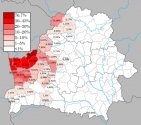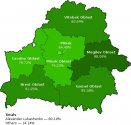Really I do not see any point other than extremely short term embarrassment...
Here's my reading of the events.
OBJECTIVES:
1. strategic level
1.1. test of invasion of Russian territory
The incursion is a test of Russian doctrinal response to direct invasion.
It also shifts the perception of the event from "unimaginable" to "already happened" which is fundamental from the standpoint of motivating participants.
Likely more tests will be conducted in the future.
1.2. test of false flag operations in Crimea
Since the operations is being conducted de facto under a false flag of "Free Russia" it is also a test of viability of similar invasions into Crimea under "Free Crimea".
It is important because Crimea is the only region of Ukraine that was annexed prior to the invasion in 2022 and accepted
de facto as part of Russia by the international community and remains politically controversial. "Free Crimea" is an important factor affecting any potential negotiated settlement as a deliberate destabilising factor in case of settlement disadvantageous to Ukraine.
1.3. test of intervention in Belarus
Insurgency in Belarus is
only possible in case of Lukashenka's death or removal from power. Operation in Belgorod may serve as a plausible threat.
Despite the general passivity and pro-Russian bias among Belarussian population the number of Belarussians who would join such operation is greater than the number of Russians for a number of cultural and political reasons. Belarus has also more advantageous demographic composition for such operation
Poles:

Ukrainians

An incursion into Belarus would also not only seriously hamper Russian operations from the territory but also force re-direction of assets to suppress the uprising. From NATO point of view the most crucial area is western Belarus i.e. Grodno and Brest Oblasts. The feasibility of separatism in the region is debatable. The 2020-21 protests and riots could serve as a foundation for support network.
The electoral initative from Holos indicated ~20% actual support for Tsikhanouskaya in August 2020. Currently that number would likely be higher due to Belarus' participation in the war and if geographical distribution of results is included it shows at least limited potential.

Without Belarus Russian air operations suffer greatly and a safe zone is de facto established over most of western Ukraine so this can't be allowed.
2. operational level
2.1. test efficiency of Russian decision process
Russian response is being tested and all relevant metrics are being measured. While the incursion is taking place in Belgorod the same mechanisms will apply in Russian-occupied areas of Ukraine, only corrected for density of assets. We don't know what shape Ukrainian offensive operations will take apart from likely and plausible directions of attack along the front but those may involve screening operations or diversions to disrupt Russian response.
Invasion into Russia is the only available test of "pure decision" which will show how Russia will react when it doesn't have the ability to even the balance with fires or mass.
2.2. shaping operations for Ukrainian offensive
It is an attempt to force redirection of Russian assets from other areas including Rosgvardia and highly mobile units. Since airborne insertion has been problematic some diversion of ground assets is necessary.
3. tactical level
3.1. test simulation of uprising as a tactic
One of the major issues affecting Russian control of occupied Ukrainian regions is the susceptibility to passive and active resistance from occupied population. While all regions have active Russian collaborators and passive population accepting any authority the collaboration and passive support
is as always conditional. "Shock and awe" raid into the rear of Russian forces may be sufficient to create chaos and activate sleeper cells of Ukrainian partisans. Psy-ops like raising flags and declaring liberation of nominally Russian-controlled towns may be used along the main attack route to create chaos in Russian lines, forcing assets to be re-deployed to secure communication lines and population centers rather than reinforcing defensive positions.
Belgorod has had war condition for months and despite it the civilian security and administration have failed. Any operation in Ukraine proper will be more effective.
3.2. test maneuver as foundation of tactics
This incursion has all the characteristics of "violence of action" mindset used in Iraq in 2003 - hit and run
forward. Such tactic while potent has certain minimal threshold of efficacy at which it becomes advantageous. That threshold requires testing of both the tactical potential of the enemy as well as own capabilities. So far Ukraine has not been able to test any large scale dynamic offensive operation using NATO-like tactics and equipment and both Ukraine and Russia were using traditional Soviet mass-focused tactics with only the VDV performing raids in early phase of the invasion. That influences the habits and thinking process of soldiers and commanders. If Ukraine intends to use a different type of tactics it must test them in practice against the enemy.
While everyone focuses on the fighting, the crucial stage that requires testing is
concentration and maneuver. What matters most at war is not what most think.Fighting is easy. Moving in and out and communicating is difficult.
CONCLUSIONS:
1. From what I've seen the primary objectives as explained in 1-3 have all been achieved.
2. Per 1.1. the psychological barrier has been broken. It doesn't matter what Russians think about it if Ukraine and "freedom fighters" are not dissuaded from repeating such operation in the future.
3. Russia has suffered a defeat in the information domain. Information domain is not only propaganda but also the information flow that you don't see which was crucial for objectives 1 to 3 and which had clear time constraints. If I was watching this operation from a command post I'd be a
very happy man to see the data that this op provided.
Russian forces couldn't locate the intruders and stop them sufficiently quickly. They also couldn't perform effective counter-operations in information domain like staging false captures of invaders, showing areas under control etc. All in all Russia has a big problem and its behaviour is predictably in line with everything we've seen since 24 Feb 2022 - fail and deny failure, repeat...
The invading force was likely far smaller than Ukrainian propaganda suggested and psy-ops online was deliberately being used to exaggerate the effect but I have reasons to believe that sleeper agents which were moved to Russian territory prior to the operation were also participating - this is indicated by evidence of random minor incidents all over the area.
It may have been also an attempt to smuggle weapons into the region which will be used to perform more attacks in the future. Sometimes the best way to bring something inside is to walk in, make a lot of noise as a distraction and just slip it out of your pocket when everyone's busy trying to grab you.
It definitely wasn't a conventional invasion to hold and control territory or even an armed recon mission so "defeating it" is as meaningless as it is most likely untrue.
The recent shootdowns of VKS aircraft were likely a test of SOF capabilities in that regard. I made quick spatial analyses and no conventional solution matched. Note the level of VKS activity in the Belgorod region. These two may be a preparatory drill for similar use of SOF for any potential push across the front to disrupt Russia air defenses by forcing threat of friendly fire. No other explanation I've seen so far makes of that incident more sense.
Contrary to what has been suggested in this thread and elsewhere it is definitely not about Bakhmut. That is likely a Russian attempt to change the perception of this operation both to shift the optics away from "Free Russia" to Ukraine and from a failure to contain and control the scale of the incursion to presenting it as a meaningless and desperate attempt to cover loss of Bakhmut.
Ukraine has defended Bakhmut far longer than it was expected to, forcing Russia to redirect assets into the area. After withdrawal the current defensive positions are still sufficient for disrupting the communications lines through Bakhmut which is the primary objective for Russian capture of the city. Ukraine may have lost Bakhmut but Russia hasn't "won" it yet per their own operational needs.
Those hummers looked kinda staged. How do hummers park themselves in a crater and why is there a tan burnt hummer with what looks like white spray paint over the burnt door?
The sign on the Russian propaganda clip is clearly painted over burn marks and placement is clearly staged.
The vehicles were likely abandoned by raiders on purpose after capturing Russian equipment which would be better for raids in enemy territory. Russian artillery destroyed abandoned vehicles and then recaptured the position. However if no lines of support are intended as part of the operation due to its nature it makes no difference if Russia controls the checkpoint or not.



